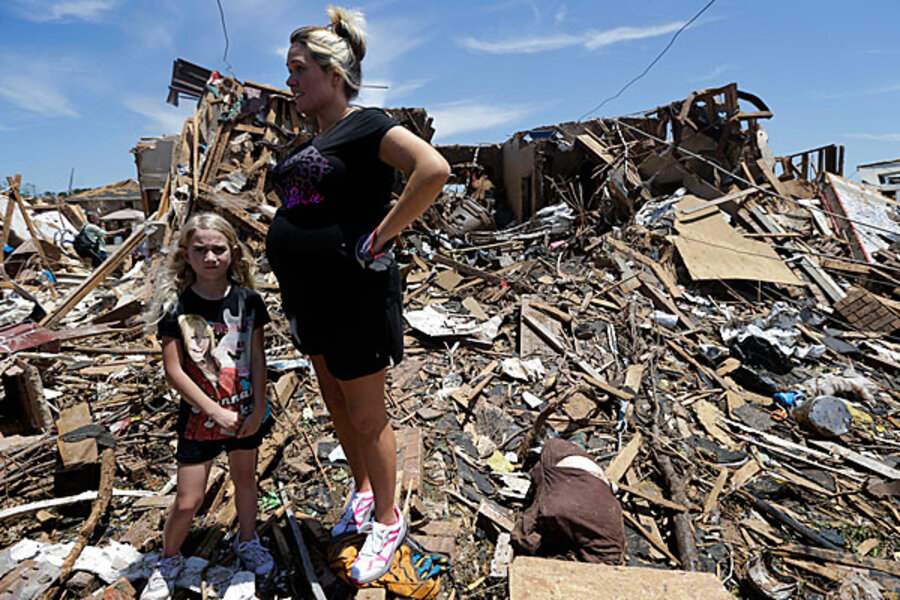Leslie Paul knew that her son was safe.
Husband Scott, an Oklahoma County sheriff's deputy, had been wanting to spend more time with the kids. So on Monday, he took 4-year-old Hayden with him to the command center off Interstate 35 at SW 29th Street.
But 7-year-old Addison was at Oak Ridge Elementary. Not yet sure where the tornado was headed, Leslie jumped in the car and went to get her daughter.
She didn't get far.
Alarmed by the deteriorating conditions and eight months pregnant, Mrs. Paul decided to take shelter at Crossroads Cathedral, just east of Santa Fe Avenue. When she arrived at the reinforced choir room at the building's center, a couple hundred people were already huddled there.
Emerging from the church after the tornado had passed, she found the roads choked with debris. On foot, she headed out on the 9-mile trek to the school.
Meanwhile, Addison and her classmates had ridden out the storm in the hallways. The tornado caused only superficial damage, and the kids were moved to the cafeteria to await their parents.
As she waited, a classmate's father arrived to retrieve him. Addison overheard the man telling the boy that his mother had been killed.
Finally, after four hours, Leslie Paul made it to the school. A teacher brought Addison out, and the two fell into each other's arms, weeping.
"Mommy," Addison sobbed. "My friend's mommy got sucked up by the tornado. And I was afraid that that would happen to you, and that I would never see you again."
The two held each other hard for about 10 minutes. Then they headed out, Addison clutching her mother's hand tightly.
They had walked for a while before Leslie was able to raise someone on her cellphone to come pick them up.
That evening, Addison talked animatedly for two hours about what had gone on at school. Then, suddenly, she broke down in tears. She cried for more than an hour.
When the family returned to their home on Tuesday, there wasn't a wall standing. Leslie Paul had gone to rescue Addison, but the little blond girl may have ended up saving her.
Digging through the rubble for something that might help comfort Addison, they found one of her favorite dolls — a Raggedy Ann.
Scott and Leslie Paul shared a birthday Friday — he turned 30, she 27. They celebrated at the Oklahoma City hotel provided by their insurance company.
Addison's little sister is due in June 10. The Pauls plan to name her Faith.







